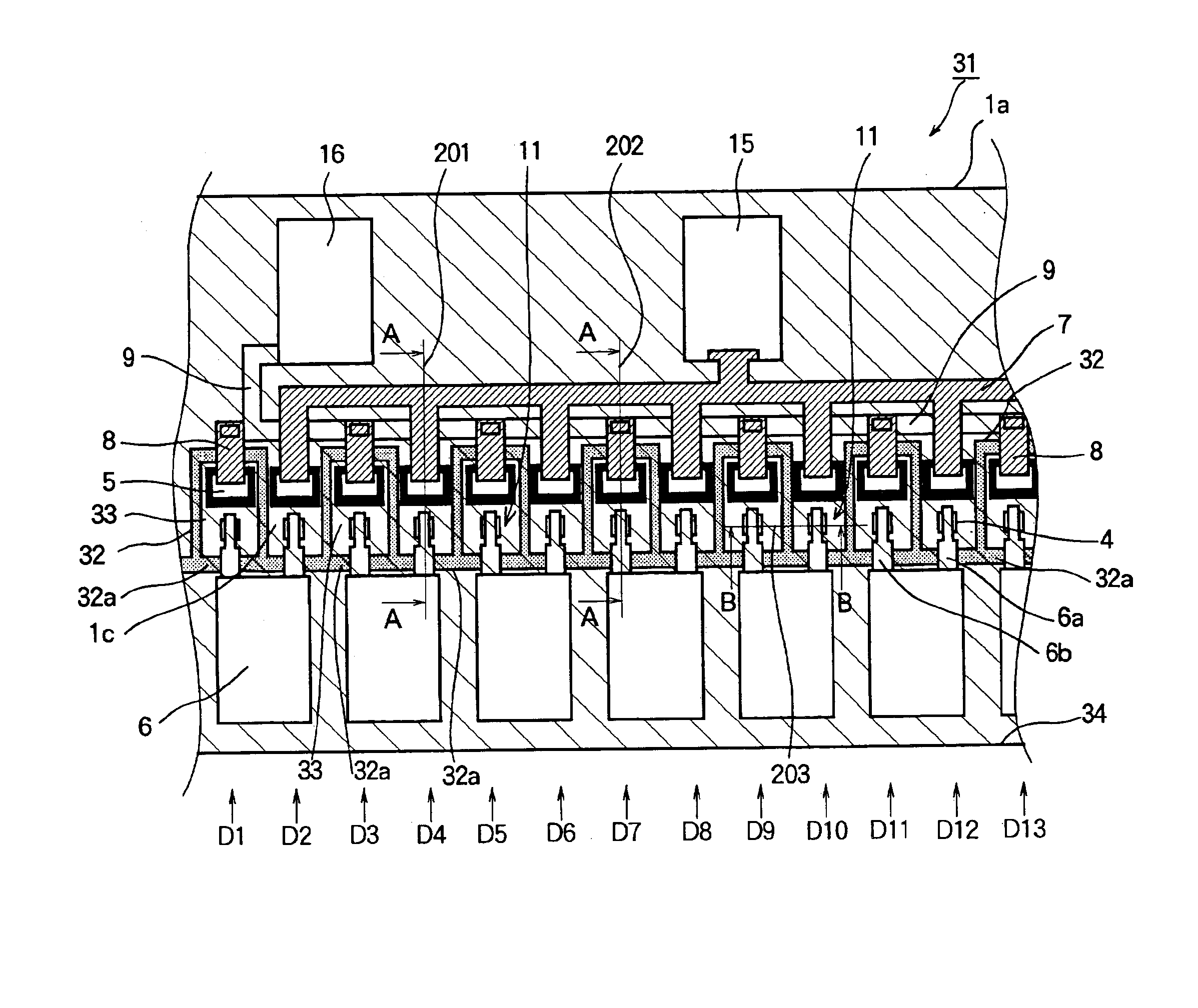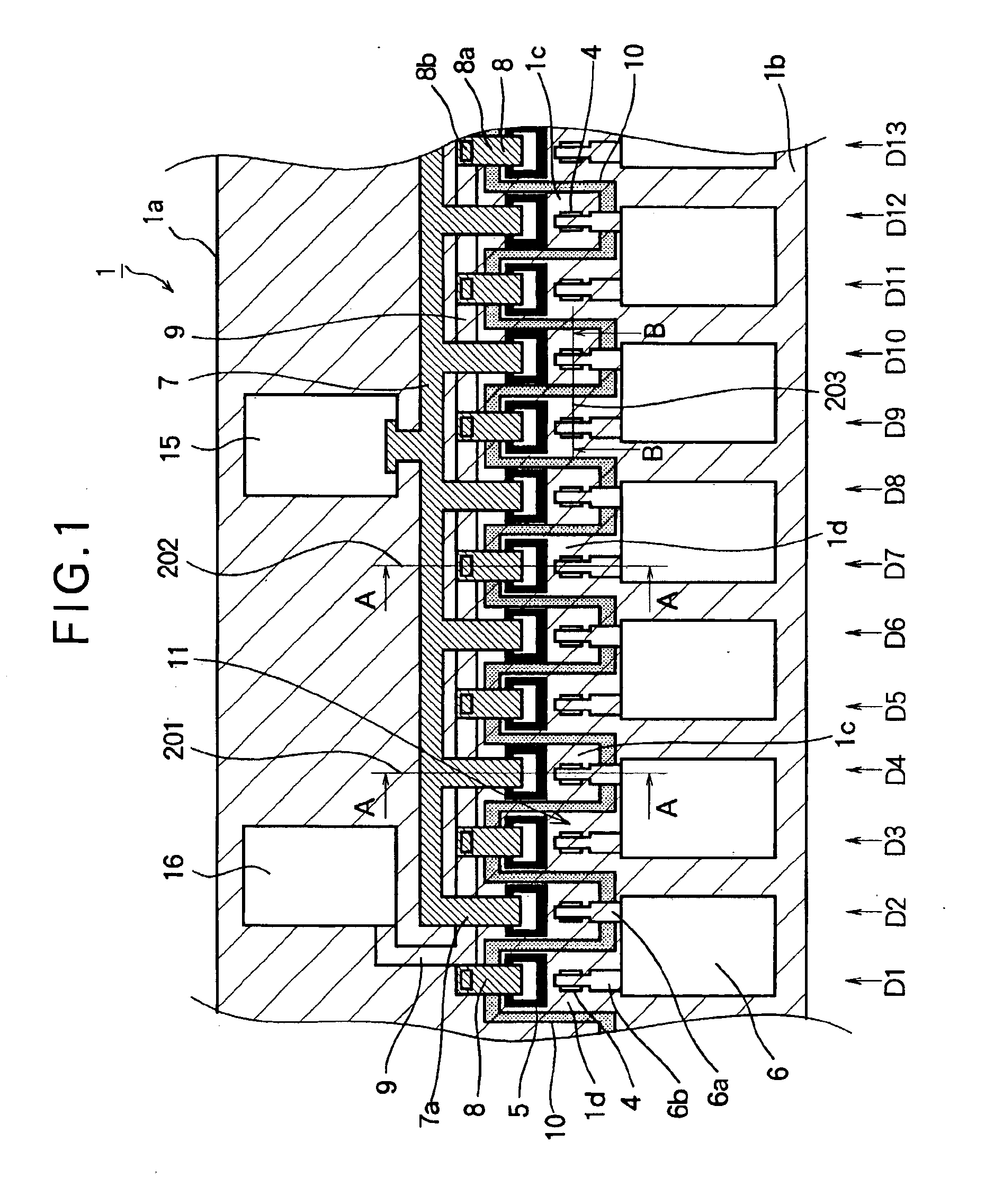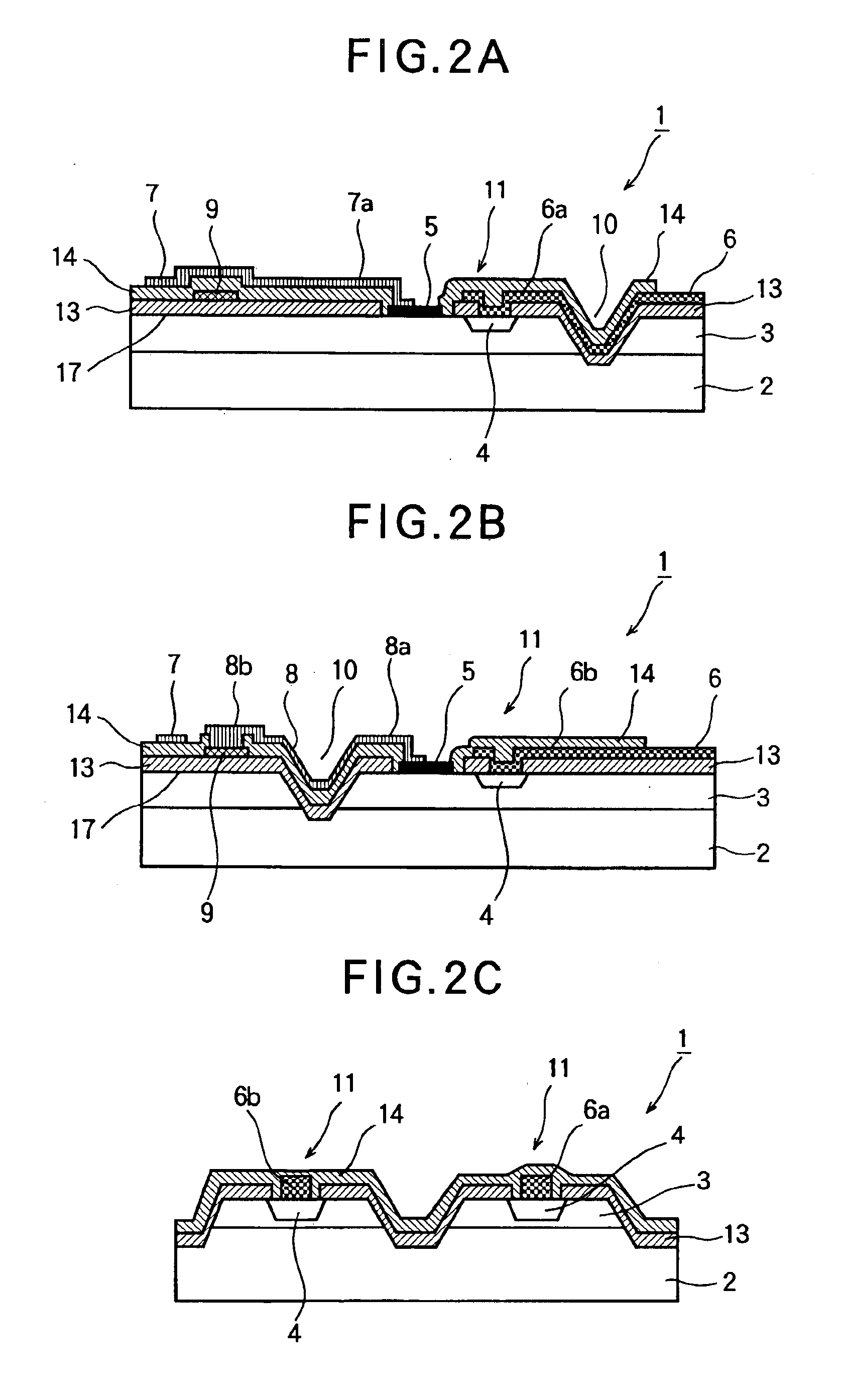Light-emitting-element array
a technology of light-emitting elements and arrays, applied in the field of light-emitting-element arrays, can solve the problems of low manufacturing yield and correspondingly high manufacturing cost, low yield, and high manufacturing cost, and achieve the effect of reducing the number of wire-bonding interconnections
- Summary
- Abstract
- Description
- Claims
- Application Information
AI Technical Summary
Benefits of technology
Problems solved by technology
Method used
Image
Examples
first embodiment
An LED array 1 according to a first embodiment of the invention is illustrated in plan view in FIG. 1. FIGS. 2A, 2B, and 2C show sectional views through index lines 201, 202, and 203, respectively, in FIG. 1, seen from the direction of arrows A and B.
As shown in the sectional views, the LED array 1 comprises a high-resistance substrate 2 such as a semi-insulating GaAs substrate, on which is formed an n-type semiconductor layer 3 (n-type corresponding to the first conductive type). A pair of dielectric films 13 and 14 are formed on the semiconductor layer 3. As shown in FIG. 1, an isolation trench 10 is formed in a square-wave pattern running in the longitudinal direction of the array, dividing the array 1 (more specifically, the n-type semiconductor layer 3) into two semiconductor blocks 1a, 1b with interlocking comb-tooth-like projections 1c, 1d.
In this embodiment, semiconductor block 1a constitutes the first semiconductor region and semiconductor block 1b constitutes the remainin...
second embodiment
FIG. 8 is a plan view of part of an LED array 31 illustrating a second embodiment of the present invention. FIGS. 9A, 9B, and 9C show sectional views through index lines 201, 202, and 203, respectively, in FIG. 8, seen from the direction of arrows A and B.
The LED array 31 in the second embodiment differs from the LED array 1 shown in FIG. 1 in the first embodiment in that the isolation trench 32 is formed so as to create island-like semiconductor blocks 33. The following description will focus on the differences between the first embodiment and the second embodiment, omitting descriptions of component elements that are the same as in the first embodiment.
As shown in FIG. 8, the isolation trench 32 in the second embodiment divides the n-type semiconductor layer 3 into a first semiconductor block 1a and a remaining semiconductor region, as in the first embodiment, but the isolation trench now includes a continuous straight lane 32a that divides the remaining semiconductor region into ...
third embodiment
FIGS. 10A and 10B show part of an LED array 41 illustrating a third embodiment of the present invention. FIG. 10A is a plan view, while FIG. 10B is a sectional view through index line 201 in FIG. 10A, seen from the direction of the arrows marked A.
The LED array 41 in the third embodiment differs from the LED array 31 shown in FIG. 8 in the second embodiment in that the isolation trench comprises a plurality of separate closed loops 43 surrounding the island-like blocks 33. The following description will focus on the difference between the second and third embodiments, omitting descriptions of component elements that are the same as in the first and second embodiments.
As shown in FIG. 10A, the isolation trench loops 43 make the island-like blocks 33, which include the odd-numbered light-emitting elements 11, independent of other regions. The comb-tooth-like projections 1c of semiconductor block 1a, shown in FIG. 8, which include the even-numbered light-emitting elements 11, are now c...
PUM
 Login to View More
Login to View More Abstract
Description
Claims
Application Information
 Login to View More
Login to View More - R&D
- Intellectual Property
- Life Sciences
- Materials
- Tech Scout
- Unparalleled Data Quality
- Higher Quality Content
- 60% Fewer Hallucinations
Browse by: Latest US Patents, China's latest patents, Technical Efficacy Thesaurus, Application Domain, Technology Topic, Popular Technical Reports.
© 2025 PatSnap. All rights reserved.Legal|Privacy policy|Modern Slavery Act Transparency Statement|Sitemap|About US| Contact US: help@patsnap.com



